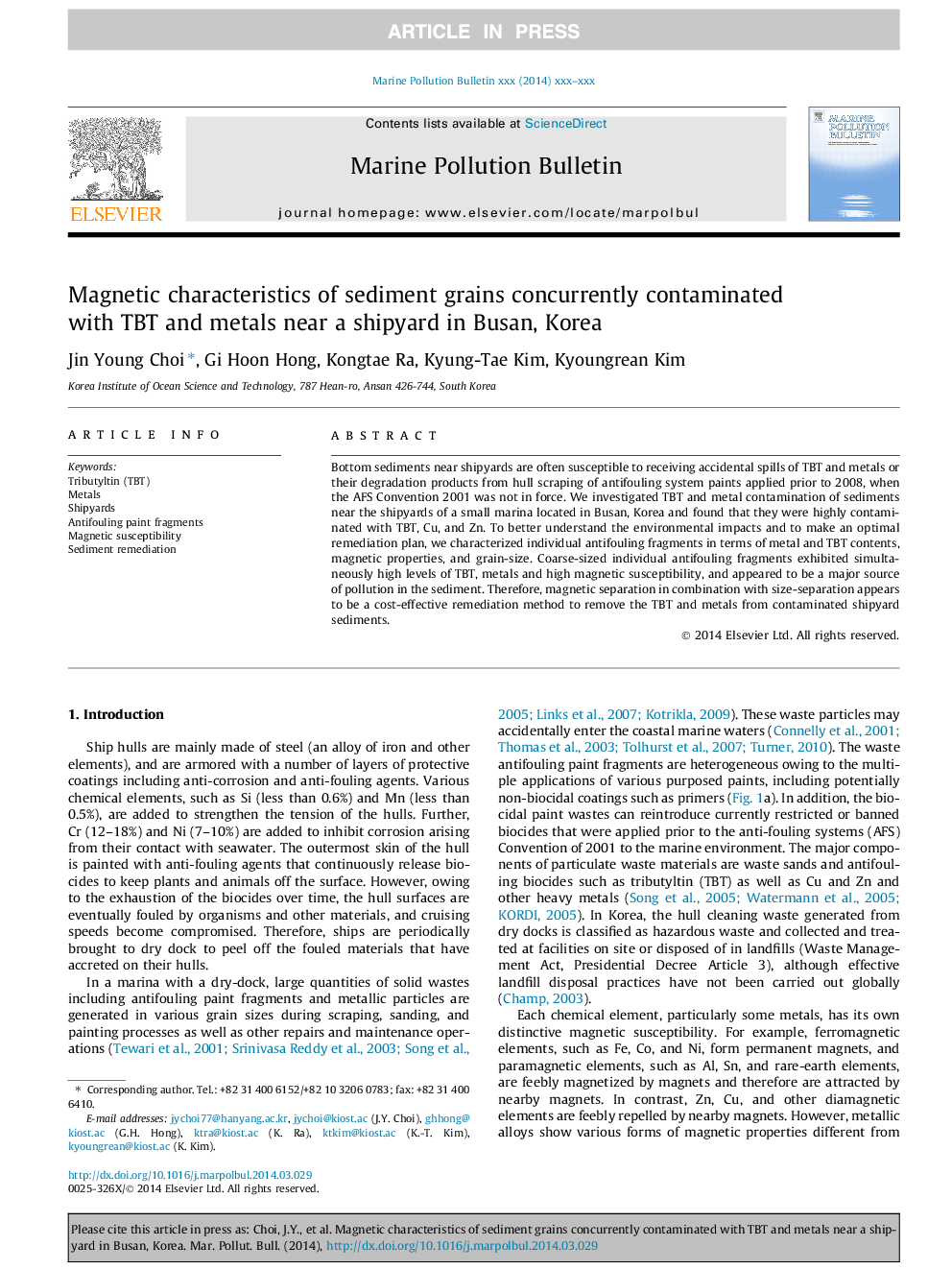| Article ID | Journal | Published Year | Pages | File Type |
|---|---|---|---|---|
| 6358537 | Marine Pollution Bulletin | 2014 | 7 Pages |
Abstract
Bottom sediments near shipyards are often susceptible to receiving accidental spills of TBT and metals or their degradation products from hull scraping of antifouling system paints applied prior to 2008, when the AFS Convention 2001 was not in force. We investigated TBT and metal contamination of sediments near the shipyards of a small marina located in Busan, Korea and found that they were highly contaminated with TBT, Cu, and Zn. To better understand the environmental impacts and to make an optimal remediation plan, we characterized individual antifouling fragments in terms of metal and TBT contents, magnetic properties, and grain-size. Coarse-sized individual antifouling fragments exhibited simultaneously high levels of TBT, metals and high magnetic susceptibility, and appeared to be a major source of pollution in the sediment. Therefore, magnetic separation in combination with size-separation appears to be a cost-effective remediation method to remove the TBT and metals from contaminated shipyard sediments.
Related Topics
Physical Sciences and Engineering
Earth and Planetary Sciences
Oceanography
Authors
Jin Young Choi, Gi Hoon Hong, Kongtae Ra, Kyung-Tae Kim, Kyoungrean Kim,
